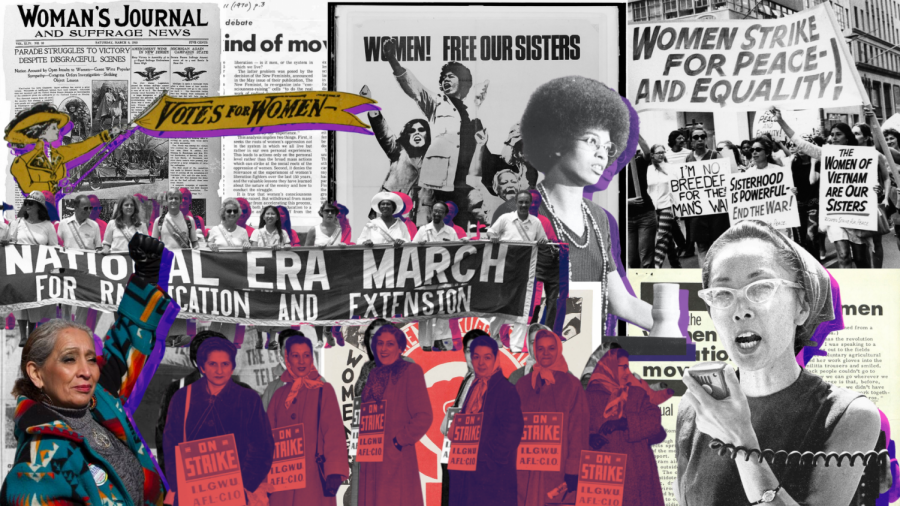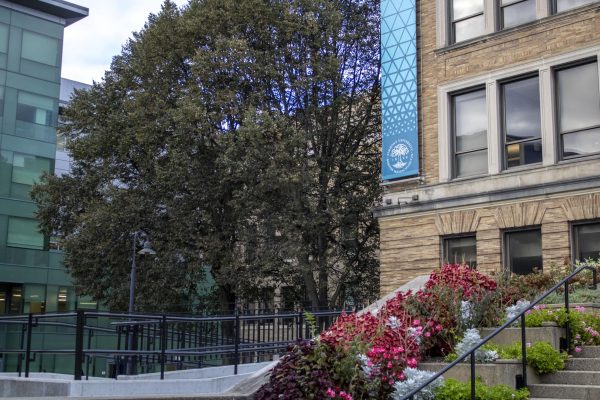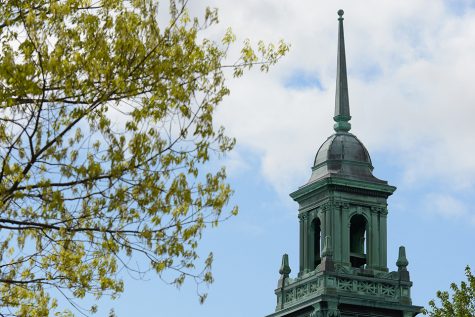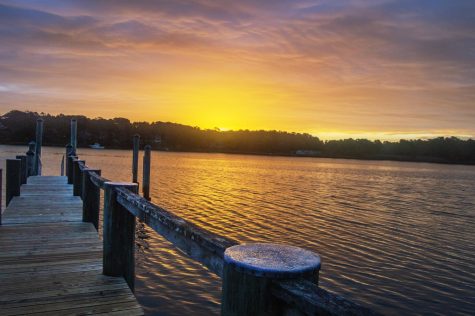Celebrating Women’s History Month
“There remains much work for activist scholars to do before we have gender equity and gender justice. Yet there are other gaps in the national narratives we’re taught too: racial exclusions, queer invisibilities, silenced classes and regions and beliefs. Twelve months aren’t enough to get to them all, let alone one.”
March 19, 2021
Laura Prieto is a culture historian, writer, and professor of History and Women’s and Gender Studies at Simmons. For more from Laura, visit her website or follow her on Twitter.
It’s March and my social media feed is full of Women’s History Month — quotes, memes and lists of trailblazers. Themed programming abounds on television networks and streaming platforms alike. And, as with every other holiday, the folks in marketing are working it with a vengeance too, from HerSHEy bars to the debut of Eleanor Roosevelt Barbie. Where did all this enthusiasm for Herstory come from, you may wonder? And is it really needed? Isn’t it insulting on some level — by dedicating a specific month to Women’s History don’t we suggest that it’s okay to ignore it for the other eleven months? Like say, Administrative Professionals Day (originally called Secretary’s Day), Transgender Awareness Week, or National Ice Cream Month — shouldn’t we appreciate and celebrate those things every day?
First, it’s worth knowing that the official declaration of Women’s History Month is of more recent vintage than you may suspect. It was not until 1980 that President Jimmy Carter officially designed March 2-8 the first National Women’s History Week in the United States. Congress jumped aboard with a joint resolution, (Public Law 97-28, if you want to look that up,) in 1981 and every succeeding President, from Reagan to Biden, have continued the bipartisan enthusiasm. This was over fifty years after Black scholar Carter Woodson created Negro History Week in 1926, and over a decade after that commemoration had already become Black History Month. Women’s History Week became its own whole Month in March 1987 and each year thereafter, through Congressional resolution and/or Presidential proclamation.
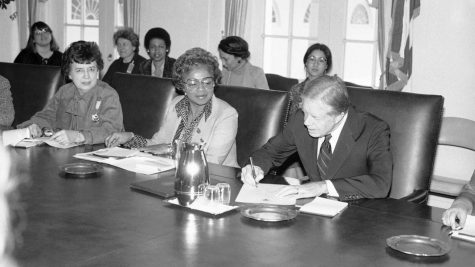
What made it seem necessary in 1980 to mark women’s history with a special week, or month? President Carter’s message to the nation voiced much of what you’d expect, praising, “the achievements, leadership, courage, strength and love of the women who built America,” women who had long gone “unsung,” even though their contributions were, “as vital as that of the men whose names we know so well.” (Feminist historians had been saying those things for centuries before.)
He called upon schools, libraries, and community organizations to take special note of, “the leaders who struggled for equality – – Susan B. Anthony, Sojourner Truth, Lucy Stone, Lucretia Mott, Elizabeth Cady Stanton, Harriet Tubman, and Alice Paul.” But Carter also explicitly connected that history of activism to the Equal Rights Amendment, which he supported.
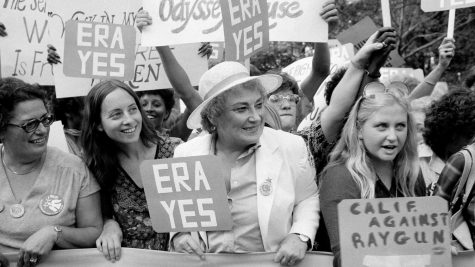
“Equality of Rights under the Law shall not be denied or abridged by the United States or by any state on account of sex,” the proposed amendment read. The Equal Rights Amendment had first been proposed in 1920 and finally won broad political support with the women’s liberation movement in the 1970s. But in 1980 the ERA was stagnating; an insufficient 35 states had ratified it with no prospect of additional ones, with some of the states that had ratified it voting to retract it. Women’s History Month meant to call attention to the suffragists and abolitionists whose goal of equal rights remained unfulfilled; to shame Americans in the present into finishing their work. A connection between knowledge, action, research and activism was thus part of Women’s History Month from its birth.
If you don’t want to credit a white male President with thinking up Women’s History Month, there are alternative possibilities. As with many holidays, Women’s History Month has multiple origin stories– but all of them connect to political activism as well.
The very timing of Women’s History Month in March is connected to International Women’s Day, which is March 8. The Census Bureau website claims both WHM and IWD began with a garment worker’s strike in New York City in 1857. Whether or not that’s accurate, Socialist women workers in the U.S. organized the first recognizable Women’s Day in 1909, and Socialists expanded it internationally in the years immediately following. Marked mainly in central and eastern Europe, Soviet Russia, and Communist China, IWD did not re-emerge in the U.S. until the late 1960s.
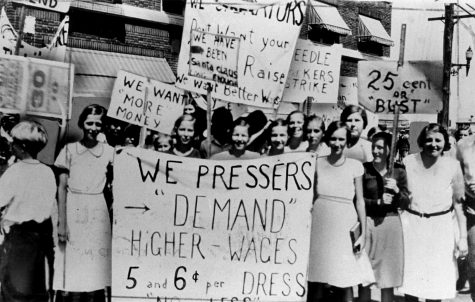
Setting those radical roots aside, Sonoma County, California, claims to be the true birthplace of Women’s History Month, because in 1978, an educational committee scheduled a local Women’s History Week to take place in March on the week of IWD.
Carter, Congress, Socialists, or Sonoma County: all the origin stories of WHM connect to the feminist activist scholars who researched women’s history in the first place. The first Presidential declaration of Women’s History Week quotes Gerda Lerner, who wrote, “Women’s History is Women’s Right.” Lerner, a Jewish Austrian refugee, came to the U.S. in 1939 after serving a prison term for anti-Nazi activism.
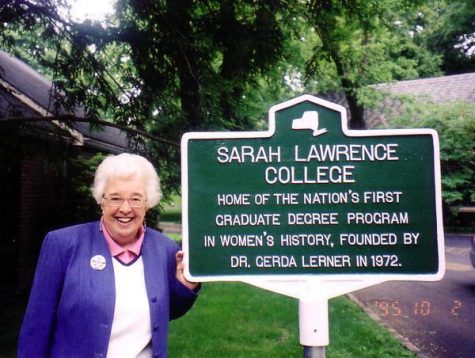
In her new country, Lerner joined the civil rights movement and co-founded the National Organization for Women. She also got a Ph.D. in History and helped establish the scholarly field of women’s history with books like The Grimke Sisters from South Carolina (1967) and Black Women in White America (1972). Her mission was to empower women to know their own past.
At Sarah Lawrence College, Lerner and fellow historian/civil rights activist Joan Kelly ran a summer institute in women’s history for leaders of national organizations for women and girls.
“The two aspects of my own consciousness, that of the citizen and that of the scholar, had finally fused,” Lerner wrote. Attendee Molly Murphy MacGregor brought her Sonoma County Women’s History Week plan to that summer institute. MacGregor then became a founder of the National Women’s History Project, the coalition that lobbied for a Week — then Month — to honor not just women in history, but women’s history itself.
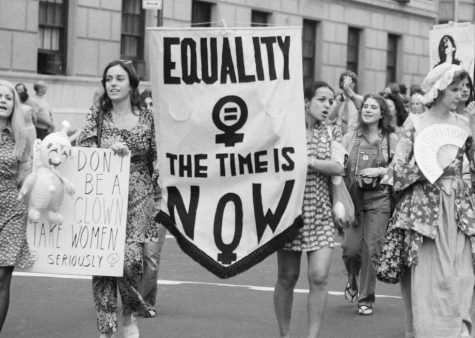
The hopes that led to Women’s History Month remain unsatisfied. The first national Women’s History Week in 1980 did not seal the deal on the ERA. Women, (cisgender and transgender,) remain underrepresented in textbooks and K-12 class curricula, as I know well from the students who come to my courses, hungry for those histories. There remains much work for activist scholars to do before we have gender equity and gender justice. Yet there are other gaps in the national narratives we’re taught too: racial exclusions, queer invisibilities, silenced classes and regions and beliefs. Twelve months aren’t enough to get to them all, let alone one.
Though I teach, research, and write women’s history every month of the year, I am happy for my chosen field to take turns in the national spotlight. A month is a good amount of time to catch the eye of politicians, advertisers, show-runners, and influencers– folks who will, in some form, spread the knowledge about what we recover. If women’s history were just every day they would not pay it the same attention. And who says we should not amplify Black women as part of Black History Month, Latinx women as part of Latino History Month, Indigenous women as part of Native American Heritage Month?
Just pass me the HerSHEys bar and let’s keep going.



